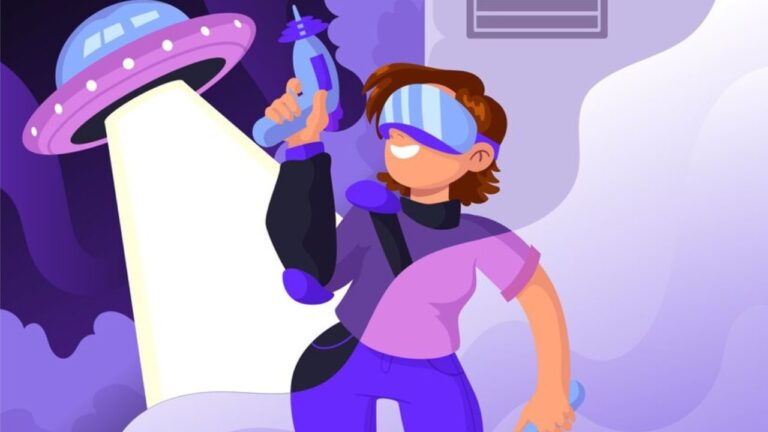In the realm of creativity, Virtual reality wasting away concept art is a game-changer. For artists and designers, the concept of seeing your drawings and ideas come to life in a 3D world is nothing short of magical. However, like all emerging technologies, VR presents unique challenges that can sometimes lead to the “wasting away” of concept art. Let’s explore how VR impacts concept art, its benefits, and strategies to ensure your creative ideas reach their full potential.
Understanding Virtual reality wasting away concept art
Virtual reality is transforming the way artists and designers create and present their work. By immersing audiences in a 3D environment, VR allows for a more interactive and engaging experience. Instead of viewing a flat image, viewers can explore and interact with the artwork, providing a deeper understanding and appreciation of the piece.
Despite these advancements, many artists face the challenge of integrating traditional concept art into VR. Concept art, typically 2D, must be adapted for a 3D space, which can result in unforeseen difficulties. This transition from flat to immersive can lead to some artworks never seeing the light of day, thus “wasting away” in the virtual void.
The Challenges of Transitioning to VR
One of the biggest challenges in transitioning concept art to VR is maintaining the original vision. Artists must consider depth, scale, and perspective, which are different in a 3D environment compared to a 2D canvas. This requires a new set of skills and tools, often involving steep learning curves.
Additionally, not all concept art translates well into VR. Some designs may lose their impact or visual appeal once rendered in a 3D space. This can be discouraging for artists who want to preserve their original aesthetic and message. Hence, understanding these challenges is crucial for artists looking to make the most of VR.
The Benefits of Using VR in Concept Art
Despite its challenges, VR offers numerous benefits that can elevate concept art to new heights. VR allows for a more dynamic presentation, enabling artists to showcase their work in ways that are not possible in traditional media. This enhanced interactivity can lead to greater engagement and appreciation from audiences.
VR also offers new opportunities for collaboration. Artists can work together in a shared virtual space, regardless of physical location. This can lead to innovative projects and cross-disciplinary collaborations that push the boundaries of art and technology. By leveraging the power of VR, artists can expand their creative horizons and reach wider audiences.
Keeping Concept Art Alive in Virtual Reality
To ensure your concept art does not fade away in the VR realm, it’s important to develop strategies that align your artistic vision with technological possibilities. Begin by familiarizing yourself with VR tools and techniques. Many platforms offer tutorials and resources to help artists get started.
Additionally, consider how your art will be experienced in VR. Think about the interactivity and user engagement your artwork will provide. By designing with the end user in mind, you can create more impactful and memorable experiences. Don’t be afraid to experiment and iterate on your ideas.
Tips for Successful VR Art Creation
The key to successful VR art creation is experimentation and adaptability. Here are three tips to help you succeed in this innovative medium:
- Start Small: Begin with simple projects to understand the VR workflow and tools. Gradually increase complexity as you gain confidence and expertise.
- Seek Feedback: Share your work with peers and mentors to gather constructive feedback. This can help you identify areas for improvement and refine your approach.
- Stay Informed: Keep up with the latest trends and developments in VR technology. This will ensure you’re aware of new tools, techniques, and opportunities for growth.
Overcoming Creative Block in VR
Virtual reality can sometimes lead to creative block, especially when navigating new technologies and concepts. To overcome this, artists should focus on staying inspired and motivated. Engage with other VR artists and communities for support and inspiration.
Participating in workshops, webinars, and online forums can also provide valuable insights and encouragement. Surround yourself with diverse perspectives to spark new ideas and approaches. Remember that creativity is a continuous process, and perseverance is key.
The Future of Concept Art in VR
The future of concept art in VR is bright, with endless possibilities for exploration and innovation. As VR technology continues to advance, artists will have more tools and resources at their disposal to create immersive experiences. By staying adaptable and open to change, artists can thrive in this evolving landscape.
The merging of VR and concept art opens new avenues for storytelling and expression. With the right mindset and tools, artists can harness VR’s potential to bring their visions to life in ways previously unimaginable. This exciting intersection of technology and creativity is just the beginning.
Conclusion
Virtual reality is reshaping the world of concept art, offering new opportunities for creativity and expression. While challenges exist, the benefits of VR can lead to more engaging and dynamic artistic experiences. By understanding VR’s role and developing effective strategies, artists can ensure their concept art reaches its full potential in this exciting medium.
To explore more about virtual reality and its impact on art, consider joining workshops or online communities. These resources can provide valuable insights and support as you continue your artistic journey. Remember, the possibilities are endless when you combine creativity with technology.
